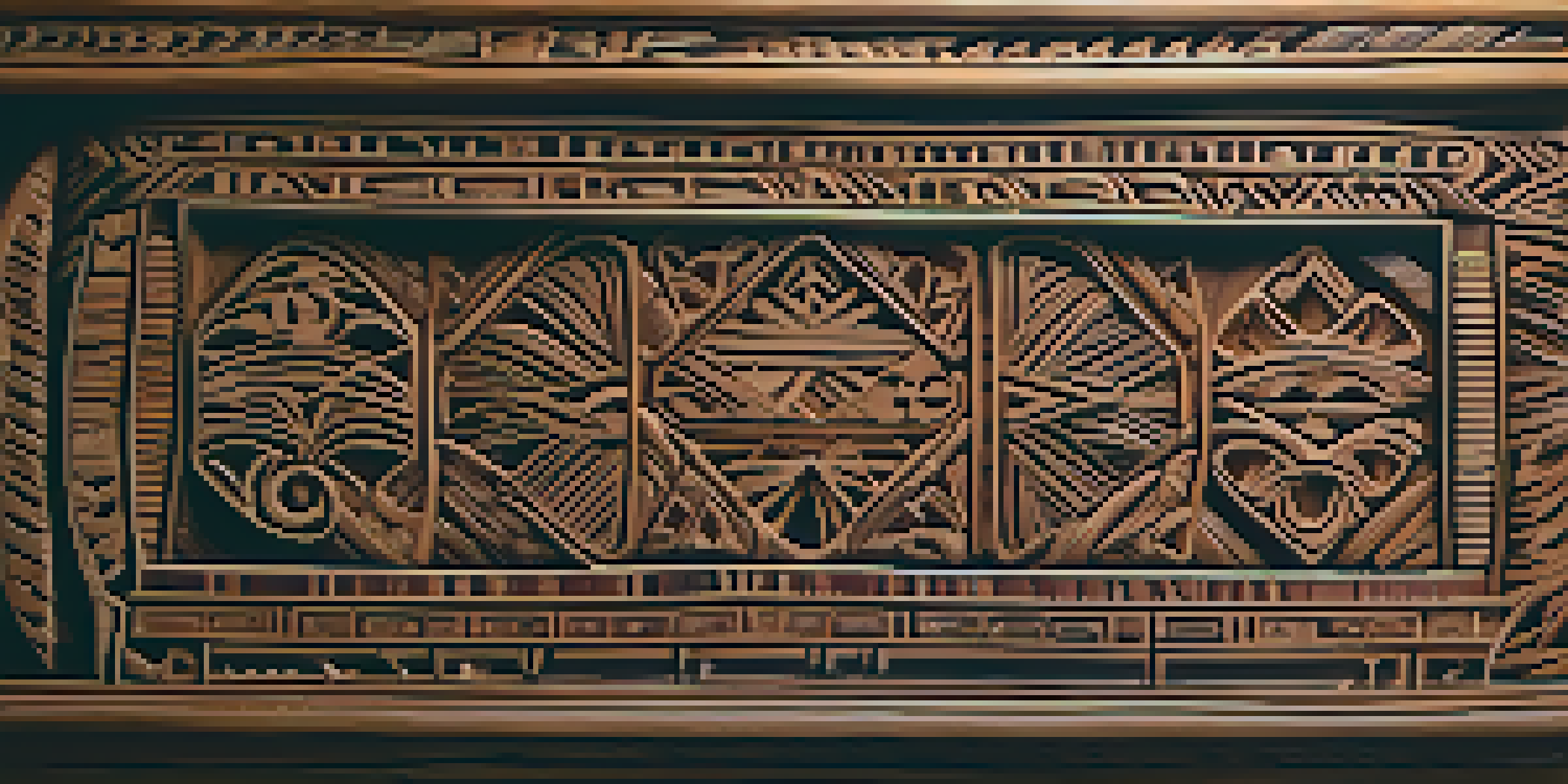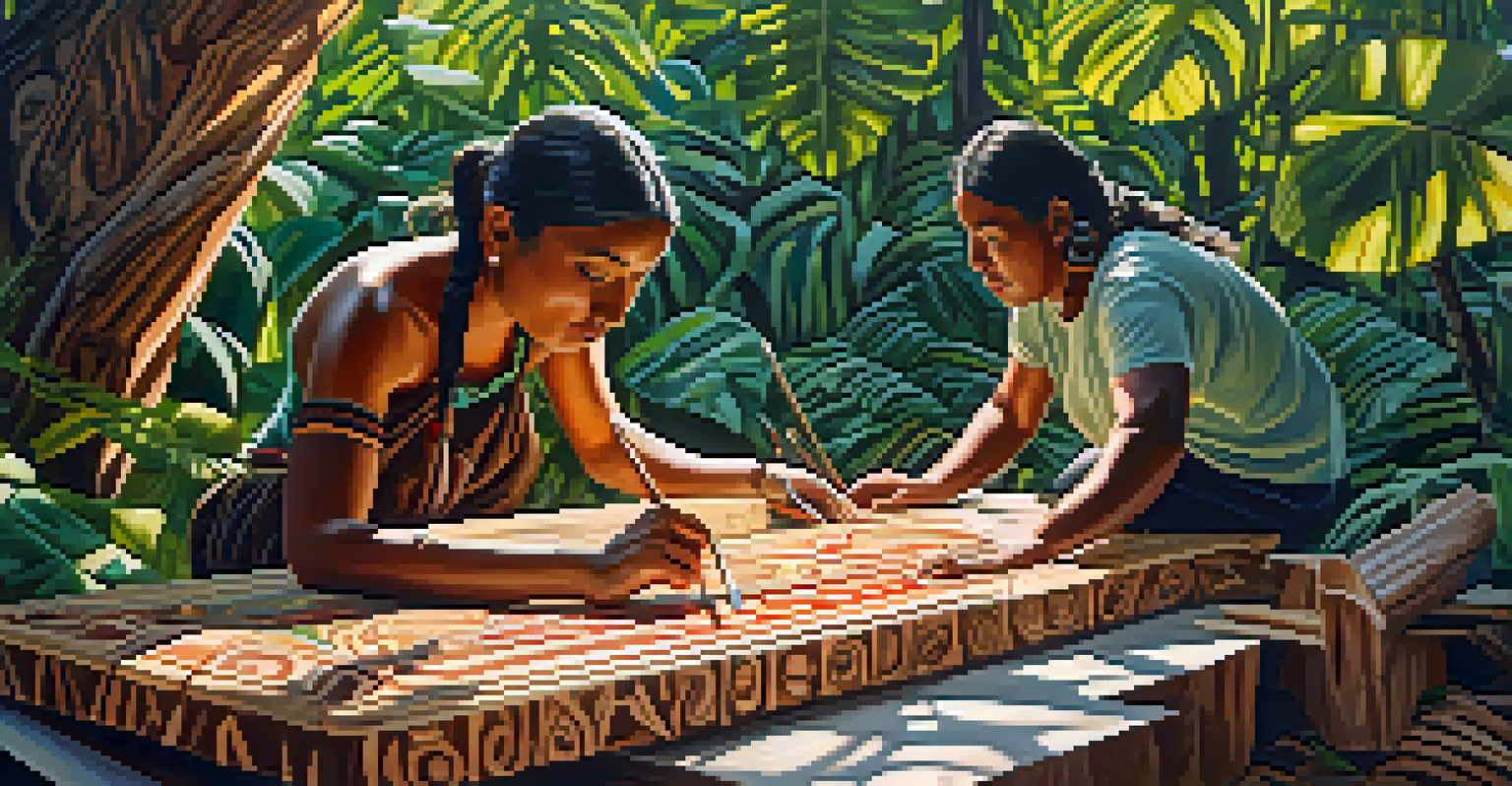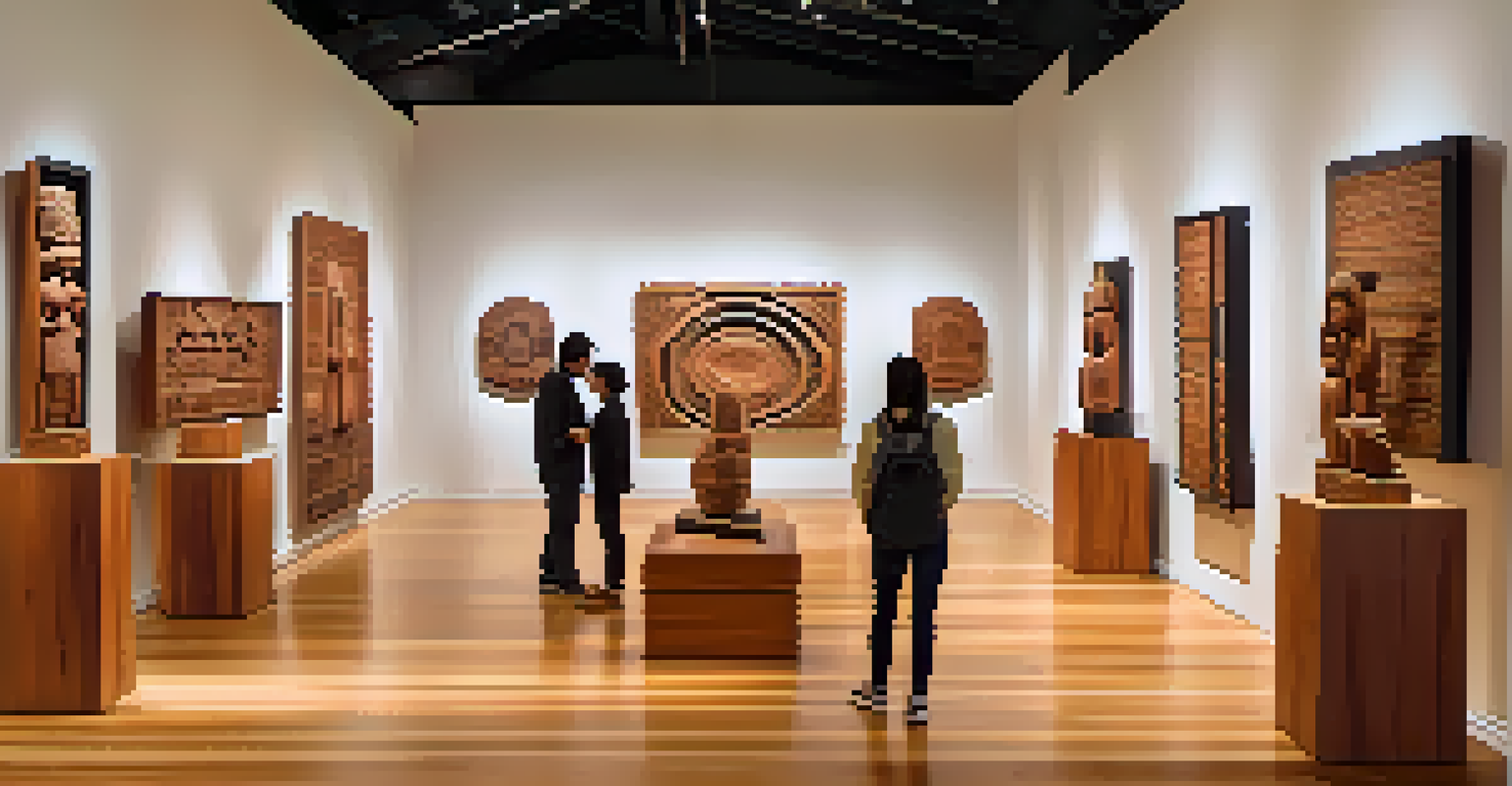Cultural Carvings: Art as a Voice for Indigenous Rights

Understanding Cultural Carvings and Their Significance
Cultural carvings are more than just beautiful art; they are a reflection of indigenous identity and heritage. Each piece tells a story, often rooted in the history, beliefs, and traditions of a community. Through intricate designs and symbols, these carvings serve as a visual language that connects generations.
Art is a way of recognizing and understanding the world around us, and it can be a powerful force for change.
For many indigenous people, these carvings are a way to preserve their culture in the face of modernization. They act as a bridge between the past and the present, allowing younger generations to learn about their ancestry. This practice not only fosters a sense of belonging but also promotes cultural pride.
Moreover, cultural carvings often carry messages about social and environmental issues. They can be powerful tools for raising awareness about the struggles faced by indigenous communities, making them an essential part of the fight for rights and recognition.
Art as a Catalyst for Indigenous Rights Movements
Throughout history, art has played a pivotal role in social justice movements, and indigenous rights are no exception. Cultural carvings can serve as powerful symbols of resistance against oppression and colonization. They convey the narratives of injustices faced by indigenous peoples, capturing attention and sparking dialogue.

In recent years, many artists have used their carvings to advocate for land rights, environmental protection, and cultural preservation. By showcasing their work in galleries or public spaces, these artists not only celebrate their heritage but also educate the wider public about the issues at hand.
Cultural Carvings Preserve Heritage
Cultural carvings serve as vital tools for preserving indigenous identity and passing down traditions to future generations.
This artistic expression can be seen as a form of activism, where each carving contributes to a larger conversation about equality and justice. The emotional impact of these pieces can inspire others to join the cause, amplifying the voices of indigenous communities.
The Role of Storytelling in Cultural Carvings
Storytelling is at the heart of many indigenous cultures, and carvings often encapsulate these narratives. Each design may represent an important event, legend, or teaching that has been passed down through generations. This oral tradition finds a new medium in visual art, making stories accessible to all.
The stories we tell about ourselves shape our identity and the way we connect with others.
Through these carvings, artists are able to communicate complex cultural concepts in a relatable way. For example, a carving depicting a traditional hunting scene may not only tell the story of survival but also highlight the importance of sustainability and respect for nature.
In this way, cultural carvings serve as both educational tools and reminders of the rich histories and wisdom that exist within indigenous communities. They invite viewers to engage with these stories, fostering a deeper understanding and appreciation of diverse cultures.
Preservation of Indigenous Cultures Through Art
As globalization continues to impact indigenous communities, the preservation of culture becomes increasingly important. Cultural carvings offer a means of safeguarding traditions that might otherwise be lost. By creating and sharing these artworks, artisans play a crucial role in keeping their cultures alive.
Many indigenous artists are now incorporating contemporary themes into their work, blending traditional techniques with modern influences. This evolution not only honors their heritage but also makes their art relevant in today's world. It invites curiosity and engagement from a broader audience.
Art as Activism for Indigenous Rights
Through cultural carvings, indigenous artists advocate for social justice, raising awareness about key issues faced by their communities.
Efforts to promote and protect these art forms can help ensure that future generations can carry forward their cultural legacies. Supporting indigenous artists means valuing their narratives and contributing to the resilience of their communities.
Challenges Faced by Indigenous Artists
Despite the importance of cultural carvings, indigenous artists often face numerous challenges. Issues such as funding, access to materials, and representation in the art world can hinder their ability to create. Additionally, cultural appropriation poses a significant threat, as non-indigenous individuals replicate these sacred symbols without understanding their significance.
The lack of fair compensation and recognition for their work can also be disheartening for artists. Many struggle to find platforms that genuinely promote indigenous art rather than exploit it for profit. This underrepresentation can lead to a dilution of their stories and messages.
Addressing these challenges requires a collective effort from communities, art institutions, and consumers. By valuing the authenticity of indigenous art and supporting artists directly, we can help create a more equitable space for their voices to be heard.
The Impact of Technology on Cultural Carvings
Technology is reshaping the way indigenous artists create and share their cultural carvings. Digital platforms allow artists to reach wider audiences than ever before, showcasing their work online and selling it through e-commerce. This accessibility can empower artists and provide them with new income streams.
Moreover, technology enables artists to experiment with new techniques and materials, leading to innovative artistic expressions. For example, some artists are now incorporating digital elements into their carvings, blending traditional craftsmanship with modern technology to create unique pieces.
Technology Transforms Artistic Expression
The rise of digital platforms allows indigenous artists to reach broader audiences while blending traditional art with modern techniques.
However, it's crucial to navigate this digital landscape carefully, ensuring that traditional knowledge and cultural integrity are preserved. Artists must balance the benefits of technology with the need to protect their cultural heritage from misrepresentation and exploitation.
Celebrating Indigenous Voices Through Cultural Carvings
Cultural carvings serve as a celebration of indigenous voices, offering a platform for self-expression and storytelling. They remind us of the rich tapestry of cultures that exist around the world, encouraging us to appreciate their uniqueness. By elevating these voices, we help to counteract the narratives that have marginalized indigenous communities for far too long.
Art exhibitions, community events, and educational programs focused on cultural carvings can foster greater understanding and respect for indigenous cultures. These initiatives not only benefit the artists but also enrich the communities that engage with their work.

Ultimately, by recognizing and honoring the significance of cultural carvings, we contribute to a more inclusive narrative that values diversity and promotes social justice. Every carving is a step toward a world where indigenous voices are celebrated and heard.